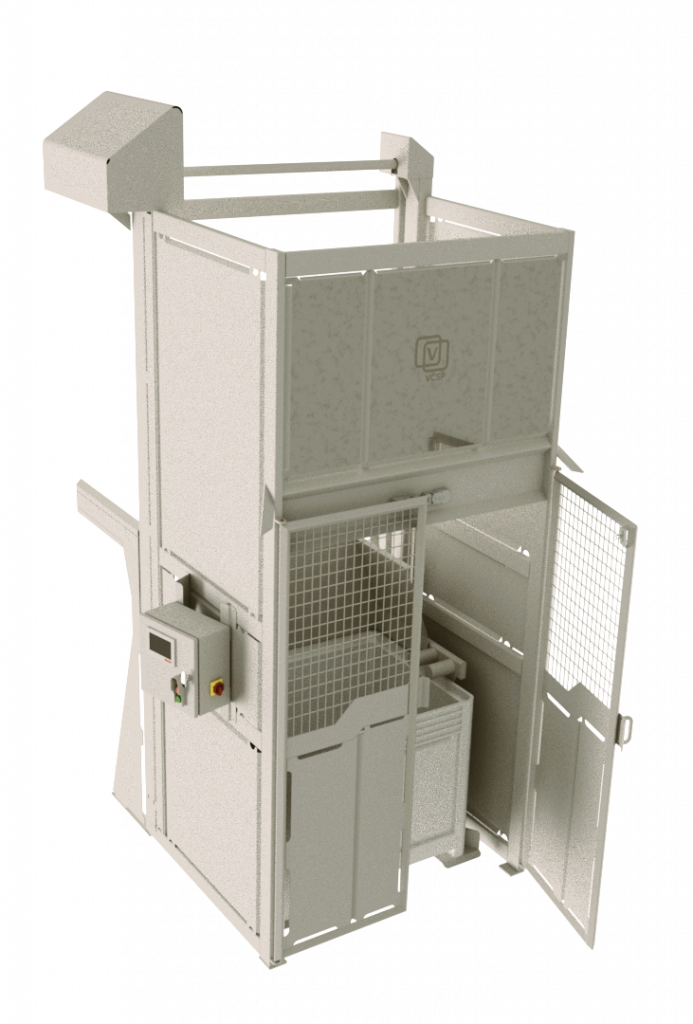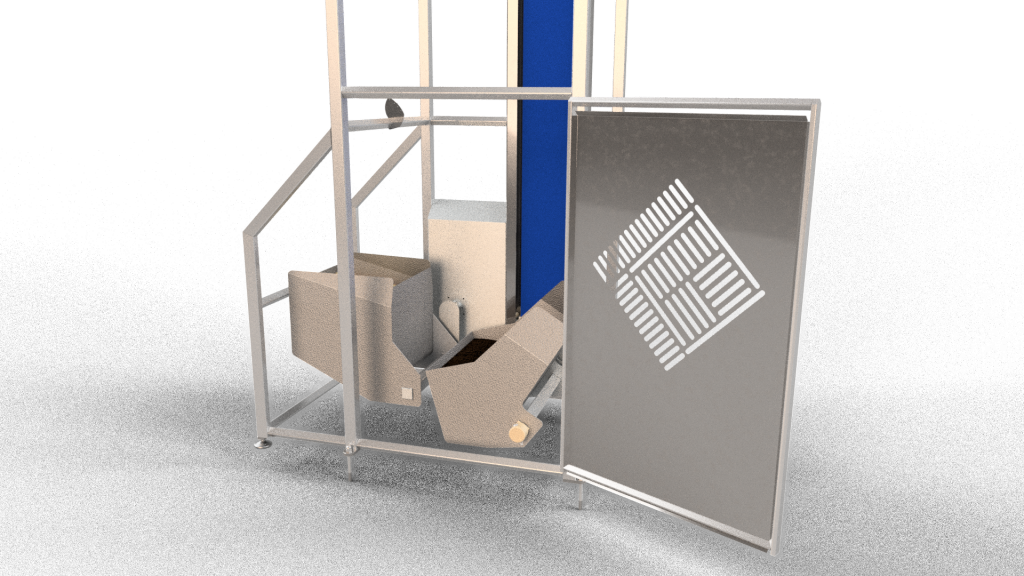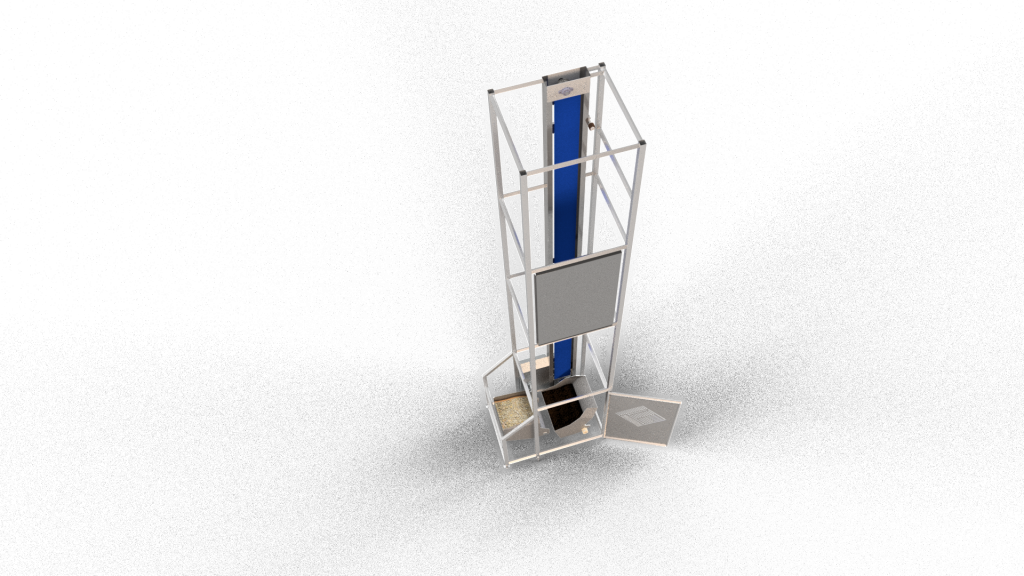Lift and Tip Units
Our market-leading lift and tip units can be designed and manufactured to match your exact requirements. All our equipment is built in the UK, manufactured to the highest standards, and tested thoroughly.
Lift and Tip Units
Our machinery is used in various industries to lift and tip containers or bins (dolavs, pallets and eurobins) at the start of the production line for the purpose of bulk material handling.
The basic functionality involves lifting a container or bin to a certain height and then tipping it to discharge the contents. This can be useful in scenarios where materials need to be transferred from one container to another or where the emptying of containers is part of a larger industrial process.
The specific design and features of lift and tip units can vary depending on the application and industry. Our lift and tip units are designed to improve efficiency, reduce manual labour, and streamline various industrial processes that involve the movement and handling of materials.
Benefits
Time and Labor Efficiency: Automating the lifting and tipping process can significantly reduce the time and labour required for material handling tasks. This efficiency is especially important in high-volume production environments.
Reduced Manual Handling: Lift and tip units help minimise the need for manual handling of heavy containers or bins, reducing the risk of injuries and improving workplace safety.
Consistent and Controlled Pouring: These units enable a controlled and consistent pouring or emptying of materials, ensuring uniformity in processes and reducing the likelihood of spills or waste.
Increased Productivity: By automating the lifting and tipping of containers, production processes can operate at a more consistent and higher pace, contributing to increased overall productivity.
Versatility: Lift and tip units are versatile and can be adapted to handle various types of containers, making them suitable for different industries and applications.
Customisation: Our lift and tip units can be customised to meet specific requirements of a particular industry or process.
Improved Ergonomics: Automating lifting and tipping tasks can contribute to improved ergonomics in the workplace, as it reduces the physical strain on workers associated with manual material handling.
Integration with Production Lines: Lift and tip units can be integrated into larger production lines, ensuring a seamless flow of materials and reducing bottlenecks in the manufacturing process.
Cost Savings: While there may be an initial investment in acquiring lift and tip units, the long-term benefits in terms of increased efficiency, reduced labour costs, and minimised material waste can result in overall cost savings.
Enhanced Safety: Automation of lifting and tipping processes reduces the risk of injuries related to manual handling, contributing to a safer working environment.
In summary, lift and tip units offer a range of advantages that contribute to the optimisation of industrial processes, increased productivity, and a safer workplace.



